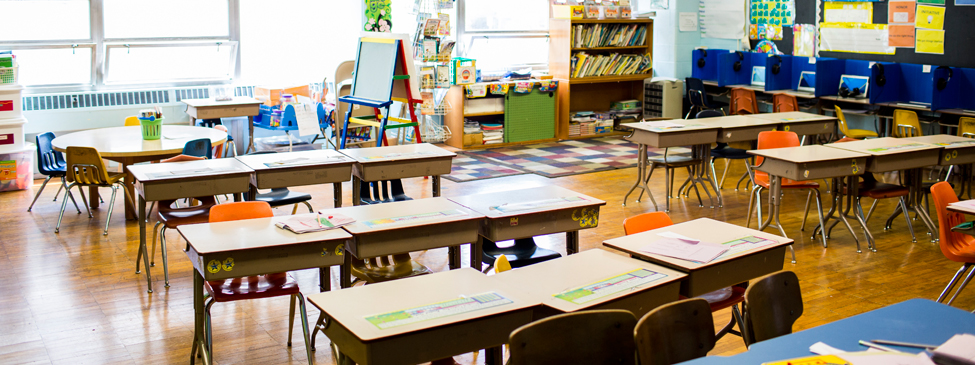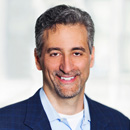As the year draws to a close, it’s a great time to reflect on the big developments in education in 2015. At TNTP, we have plenty of opinions of our own (as you know), but each year around this time, we find it useful to reach out to some of the most knowledgeable folks in the field to hear their thoughts. Like last year, and the year before that, we asked a group of leading thinkers to reflect on some of the most important education trends of 2015, and what lies ahead in 2016. We’ll leave you with their thoughts while we take some time off for the holidays. From all of us at TNTP, we wish you the very best for the new year.
Our Contributors:
RiShawn Biddle, Editor of Dropout Nation
Heidi Ramirez, Chief Academic Officer, Shelby County Schools
Michael Towne, 2014 Fishman Prize Winner
Kate Walsh, President, National Council on Teacher Quality
Conor P. Williams, Senior Researcher, New America Foundation
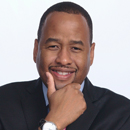 RiShawn Biddle, Writer, Editor and Publisher of Dropout Nation
RiShawn Biddle, Writer, Editor and Publisher of Dropout Nation
I always learn something new from reading RiShawn’s work. Currently the Editor and Publisher of Dropout Nation—a leading commentary website on education reform—RiShawn is also a columnist for Rare and The American Spectator, and an award-winning editorialist, speechwriter, communications consultant, and education policy advisor. As part of his role in spurring school reform, Biddle is consultant to the Black Alliance for Educational Options, the leading school reform organization for African-American families. RiShawn has quickly become one our field’s most powerful voices, and combines journalism, research, and advocacy to bring a unique perspective to education policy discussions. I particularly appreciate that RiShawn takes us all to task—regardless of where we sit on the ideological spectrum—if we lose sight of the fact that education reform is part of a larger struggle for social justice. We were eager to include his voice in this year’s Favorite Thinkers.
We know that next year will not likely be a great year for advancing the reforms that our children need for lifelong success. The only question that remains is how bad things will be.
The passage of the laughably-named Every Student Succeeds Act eviscerated the accountability measures in the No Child Left Behind Act that spurred reforms leading to a five percentage point decline in the number of functionally-illiterate fourth-graders between 2002 and 2015 (as measured on the National Assessment of Educational Progress) as well as improved teaching and curricula for poor and minority children. With accountability being limited to just the worst five percent of schools as well as little incentive for states to focus on schools and districts with wide achievement gaps, it is clear that black and Latino children will be the biggest losers of this retreat on reform.
Even worse, the passage of this version of the Elementary and Secondary Education Act comes just as states like Indiana, Texas, California, and New York are retreating on various aspects of school reform. With the federal role scaled back, especially on ensuring the civil rights of black children, it becomes more important than ever for reformers to work diligently in statehouses to keep existing reforms in place and move on new efforts. For the National Education Association and the American Federation of Teachers (along with elements of the conservative movement), the law gives their affiliates opportunities to weaken the teacher quality reforms and expansions of school choice they have long opposed.
As a result, the school reform movement must do the one thing it hasn’t done well: build strong grassroots ties with communities and activists who want brighter futures for children. This includes Black Lives Matter activists working on criminal justice reform. Whether or not school reformers can meet the challenge—and do the hard work of listening and working on issues outside of education that concern specific communities—is an open question.
***
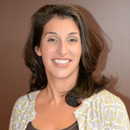 Heidi Ramirez, Chief Academic Officer for Shelby County Schools in Memphis, Tennessee
Heidi Ramirez, Chief Academic Officer for Shelby County Schools in Memphis, Tennessee
There is no one who has a better appreciation for the necessity of maintaining high expectations for all students, but also finding effective ways to support teachers, than Heidi Ramirez. As the Chief Academic Officer for Shelby County Schools in Memphis, Tennessee, she sets and implements learning strategies for the district’s approximately 100,000 students. She was previously CAO for Milwaukee Public Schools, where she led curriculum and instruction, research and evaluation, and specialized services to support implementation of Common Core. We knew Heidi would have great insight into how a district identifies and focuses on its most critical priorities to improve outcomes for kids.
Every day, school systems work to keep our children safe, supported, and learning to high standards. Staying focused on a few high-leverage areas isn’t easy, especially when the needs of our children are so great. The single most important thing we can do to ensure all of our students are truly prepared for college and careers is improve literacy. That’s what will allow students to build knowledge about their world, access promising job opportunities, and develop and express their ideas.
To do this, we have to agree on the importance of literacy, what we mean by “literacy,” and each of our roles in helping all children listen, speak, read, write, and actively engage with content. In Shelby County Schools (SCS), we’re looking a decade ahead with our strategic plan, Destination 2025. Our goal is to get 80 percent of high school seniors in 2025 to graduate ready for college or fulfilling careers. Improving our students’ literacy performance is our biggest priority for getting there.
The challenge of this past year has been getting the entire district—central office staff, school leaders, coaches, and teachers—to a shared vision for literacy teaching and learning that moves beyond basic decoding or simplified views of comprehension. We spent a ton of time investing folks in the problem: far too many of our children are getting through school without becoming effective readers and writers. While we’re making progress (often meeting or beating statewide growth rates), we need to make significant shifts to dramatically affect learning. Our Comprehensive Literacy Improvement Plan will guide this transformative work.
The first phase of the plan focuses on ensuring our classrooms are organized for success—what I often call “enabling conditions.” We’ve seen real progress in how teachers are organizing their time and classrooms, as well as trying new instructional approaches. The next phase is to ensure that we leverage these conditions to get all children high-quality, standards-aligned literacy content every single day. We have to improve the quality of texts students are reading and the quality of the tasks they’re asked to do. That’s harder.
So that’s where we’ll be pushing in 2016: rigor. I think—I hope—that’s where we’ll see lots of districts focusing their attention in the year to come. We all know that just handing teachers a set of standards, structures, and curriculum resources isn’t enough. We have to get the right content in front of children every day so that all students have the opportunity and support to meet those standards.
***
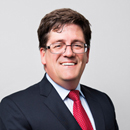 Michael Towne, 2014 Fishman Prize Winner
Michael Towne, 2014 Fishman Prize Winner
Michael Towne believes in science as an agent for social change. That’s just one of the reasons why he’s such an inspiring guy—to his students, of course, and to everyone who has the pleasure of learning from him about great teaching. For Mike, who served in the U.S. Marine Corps and worked as a small business owner selling shoes before becoming a teacher in 2001, bringing physics to Citrus Hill High School in Perris, California was always about more than the content. It was about opportunity and equity. When Mike first arrived, only 41 students were enrolled in Physics. None in Engineering. He responded by developing new programs from scratch, and increased enrollment to over 350 students in eight years while maintaining the highest standardized test scores for any subject in the district. In 2012, an astonishing 26% of the Mexican-American students who passed the AP Physics Electricity and Magnetism exam in the entire state of California came from his classroom. Currently, Mike is pursuing a Ph.D. in Education, Society, and Culture from the University of California, Riverside, specifically focusing on access and equity for ethnic minority students in science. We asked him to predict the future of science education in light of the Next Generation Science Standards.
Consider this: the most dramatically innovative shift in instructional standards in the history of modern education is bearing down on states. But few teachers, and even fewer members of the general public, know about it. No, I am not talking about Common Core standards. Say hello to the Next Generation Science Standards (NGSS).
In light of the controversial implementation of the Common Core, NGSS is less familiar but promises even more dramatic challenges. NGSS is certain to completely redefine science education in the next few decades. Science will change from a noun to a verb. Students will not be asked to simply know science, but to “do science” as well.
Gone are the days when students simply memorize some key science facts. In our increasingly complex world, there are too many facts for any one person to know anyway. So NGSS has done something dramatic: decreased the number of facts to a smaller set of key concepts students must know. Only 13 core ideas will be taught from kindergarten through high school and students will be asked to engage with each one more deeply than ever before.
NGSS combines the three dimensions of science education: science practices, core ideas, and crosscutting concepts. Teachers will be tasked with helping students learn how to ask questions, design investigations, gather and analyze data, convincingly argue from evidence, and clearly communicate their findings while also designing solutions to complex human problems.
This is definitely not your father’s science; gone are lists of facts. Students will be required to learn some of the most profound cross disciplinary concepts in modern science: energy conservation and transfer, cause and effect mechanisms, and the relationship between form and function.
In 2016, I predict a dramatic increase in the need for quality training in science content and pedagogy for all teachers of science. Even more importantly, I predict we’ll need to clearly communicate the motivations for this change to all audiences. Everyone involved in education needs to be aware that science is about to step out of its book-bound shell and become a force in all students’ lives.
***
 Kate Walsh, President, National Council on Teacher Quality
Kate Walsh, President, National Council on Teacher Quality
I’ve always looked at Kate as a model for courage and truth-telling. She is warm and charming, but uncompromising when it comes to calling out the obstacles to improving education for high-need students. As the president of the National Council on Teacher Quality, Kate has spent more than a decade building one of the most influential education policy organizations in the country. Notably, she launched the first-ever review and rankings of the nation’s teacher preparation programs, a study that has quickly changed the conversation about teacher preparation and become the key reference point for policy discussions. Among her many other accomplishments, she started and ran a boarding school located in Kenya to educate at-risk boys from Baltimore; founded one of the nation’s premier STEM programs; and started the first alternative certification program for teachers in Maryland. Here, Kate weighs in on the future of teacher prep and the role of practice—a topic close to our heart at TNTP—in preparing teachers for the classroom.
In education, the pendulum tends to swing from one thing to another—rarely somewhere in between. That tendency has unfortunate consequences for teacher preparation, since teachers have to be good at so many things.
Recently, the pendulum has swung toward the need for teacher candidates to get lots of practice. Don’t get me wrong. Practice is great. But practice for practice’s sake may play out in some troubling ways.
For example, there’s a big push to extend student teaching to a year instead of just a semester. The result is likely to be that student teachers will probably just do more of what’s currently not working very well, without addressing the many factors which make so many student teaching experiences disappointing.
If we want to make practice the next big push in teacher prep, it requires us to focus in on the reasons why student teaching doesn’t work very well but also what it is about the nature of practice that makes it so important. It’s not just about clocking more time in real classrooms, but also the need for novices to have meaningful opportunities to work on specific and carefully chosen skills.
In every other challenging human endeavor, we recognize the value that comes with parsing important skills into chunks that are learnable to the point of mastery. Think about learning the piano, or playing football. When we learn how to do something, we first have to break it down into discrete pieces which the novice is capable of achieving. It is only much later in our development that we put it all together and are allowed to fly solo.
In most teacher preparation, we see little evidence of any discrete skills ever being taught, let alone rehearsed. For example, we find that few programs teach about using meaningful praise as a classroom management technique, and almost no programs require teacher candidates to practice using praise—in spite of the fact that the use of meaningful praise has more research behind it than any other classroom management strategy. Even rarer than practice of skills is practice to the point of mastery. If a skill is practiced, it is likely to be a one-time occurrence: design a single lesson on phonemic awareness which is likely never delivered, rather than designing and delivering that lesson plan until it is consistently excellent.
The approach taken by most programs is to treat teacher preparation as a holistic enterprise—the result of which is that every novice is asked to reinvent the job of teaching. Skills don’t get taught because specific techniques and skills are interpreted by many teacher educators as a matter of classroom context. I can think of no other profession or endeavor which leaves learning the fundamentals of the job up to what someone might happen to encounter through chance occurrences. If only real classrooms are used, programs run the risk of a teacher candidate only having a single opportunity to practice such strategies as employing wait time or teaching a routine.
If we’re going to get serious about practice, it means thinking less romantically about working in actual classrooms and understanding the importance of creating situations, even artificial situations, where novice teachers can learn and practice. Think laboratories or mock trials. Novices need a safe environment where they can learn and apply what they need to know—without subjecting real children to irreparable mistakes.
***
 Conor P. Williams, Writer, Senior Researcher at the New America Foundation
Conor P. Williams, Writer, Senior Researcher at the New America Foundation
Conor has the great gift of being able to make complex issues accessible without oversimplifying or losing nuance. I’m one of many avid readers of his work in publications like the Washington Post, The Atlantic, and The New Republic. Currently, Conor is a senior researcher in the Early Education Initiative at New America. He is also the founder of New America’s Dual Language Learner National Work Group and got his start as a first grade teacher in Crown Heights, Brooklyn. Beyond his truly impressive professional credentials (Dr. Williams holds a PhD and M.A. in government from Georgetown), Conor is a brilliant thinker and writer. We asked him to comment on what’s next for education policy in 2016, and what to watch for as ESSA goes from Congress to classrooms.
This was the year where the cross-partisan nature of the education reform movement really fell apart. It was a year where conservative reformers asked if all kids really should be prepared for college—and whether low-income families’ “immorality” might be the root cause of the achievement gap. It was a year when progressive reformers got more heavily involved in broader equity fights around school integration, social justice, and police reform. In other words, it was the year when conservative and progressive reformers lost their common cause, and the old Kennedy-Bush No Child Left Behind (NCLB) coalition collapsed.
The breakup has manifested in different ways, including steady attacks on the Common Core, Teach For America, and charter schools. But those are relatively small changes in longstanding trends, and they’re hardly proof that the current reform era is flagging. No, the real evidence came this month, as Congress consigned NCLB to the sepia-toned annals of history. Its replacement, the Every Student Succeeds Act (ESSA), seems to me like a watershed piece of legislation—by far the most important recent development in both education policy and politics. It’s not just the biggest change of the year… it might be the biggest development of the last five years.
Why? ESSA gives states considerable new flexibility to decide how they’ll hold schools accountable for educating underserved children. It even offers them some room to set assessment and data-gathering rules that could make it harder to compare how different states are doing at closing achievement gaps. Whatever the merits of these policies, they’re a dramatic turn from the last decade (and change) of education reform.
Still, it’s not clear that the new law is a joint agreement that the last decade of work was wrong, because the details of ESSA itself are contested turf. There is disagreement on the Hill and throughout the Beltway education policy establishment as to just what ESSA actually does. Liberals who support it are insisting that it leaves considerable authority to any future Secretary of Education who wants to push states hard on educational equity. Conservatives are confident that it leaves no such room for a strong federal role. This lack of clarity is telling. It suggests that ESSA is less about replacing reform policies with new, promising ideas than it is about tracking changing political currents. There isn’t bipartisan agreement that reform is wrong so much as a desire for some changes without a credible new theory of action.
There are lots of things to say about this shift in education discourse. I’m tempted to yell earnest bromides about cynical, selfish political games infecting policymaking. But that’s a fool’s errand, since all policies take shape against a political backdrop. I’m tempted to complain about the many ways that different political groups have misread their incentives around ESSA’s design and passage. But what’s done is done, and ESSA will likely be law by the time you read this.
Instead, let me close with this: ESSA shows that the skills involved in crafting a new approach to improving education are not the same as the skills involved in consolidating that approach. Or, to put it another way, reformers have always been long on new ideas and short on defending them during implementation. This is common in social movements (and in business), where folks know that leaders who launch new initiatives aren’t always the best at bringing them to maturity. Those are different projects that require different talents.
So I think ESSA’s proof that reformers’ work is about to get much tougher. In 2016, they’ll face increased criticism and adverse national political currents. Are they—are we—prepared to rebuild an equity-driven movement that has more sticking power? I don’t know. But I’m going to spend some time thinking and writing about it in the months to come. Get some rest this holiday season. You’re going to need it.
